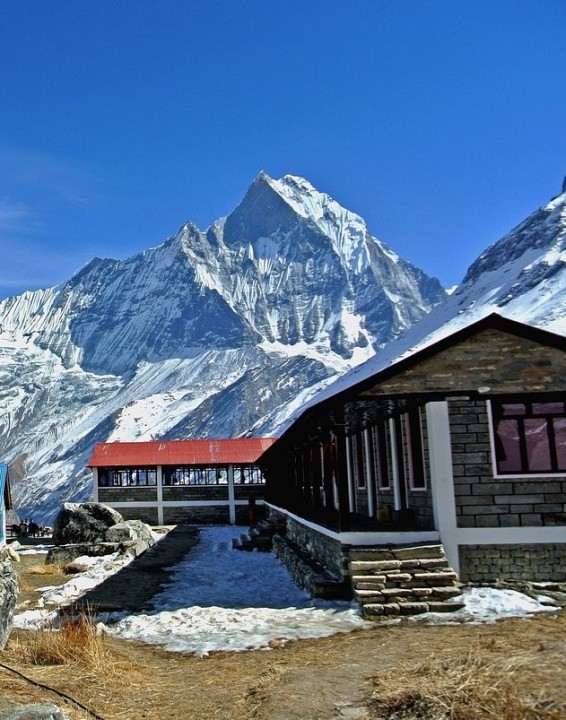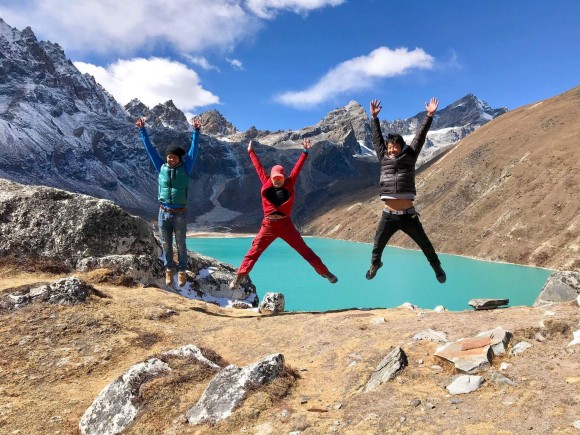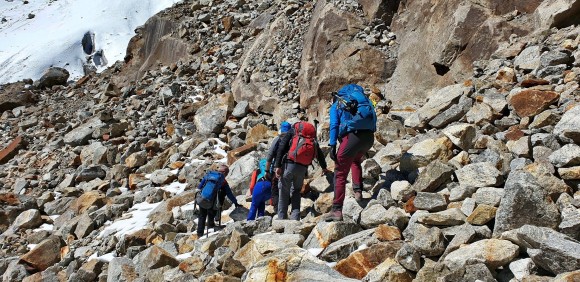Sarki Sherpa
Feb 24,2020Trekking Tips Trekkers
Nepal Treks is not only a simply phenomenal undertaking but also a perfect opportunity to enjoy rare and exotic cultures alongside the magnificent Himalayas. If you're up for the walking experience in the breathtaking terrains, you're welcome in Nepal. Including mountaineering, cycling, outdoor sports, and cultural tours to safaris, there are vast things you will experience in Nepal. All you need to know is a few tips when trekking in Nepal that will come in handy.
The choices are endless when it comes to trekking in Nepal. Whether you're a novice or a seasoned trekker who's been doing this all their life, the first thing you need to do is choose a trek you're comfortable doing.
As you are preparing Nepal treks for the first time, we advise that you join simple treks without any fear of sickness from the altitude. The quick treks will familiarize you with the Nepali hills ascending and descending. You need to brace your body for the heights and distances to adjust. Then you can overcome longer trekking routes which are more difficult.
Create a checklist of essential things and get them ready accordingly. Using high-quality equipment, clothing and trekking boots as cheap ones would only cause more problems and hassles.
If you're not a frequent hiker and you don't have all of your outdoor equipment, there's an option to rent some of your gears. Renting allows you to return items you may never use again after the trek has ended. The rental option helps to save lots of money.
Regardless of your level of fitness, the hike will feel tough at some point. Not many of us are trained to go hiking in a row over several days. To minimize this strain, start your training schedule at least 2-3 months ahead of your trip by walking in your home country on stairs, cycling and trekking. Every day you'll stop for lunch at a lodge, but it's also a good idea to carry some extra goodies in your day pack to keep your energy levels topped off. Therefore, train as well with a 10-pound backpack as you want your body to get used to carrying some weight over these long distances.
Find a reputable trekking agency
Trekking service will be of great help the first time you're trekking. They'll plan it all for you and help you transition to this new country with a support team of porters and guides. A good guide will not only be your new friend in a foreign country but also make logistics easier during the trek. They’ll introduce you to the lesser-known and rarely-visited places giving you information that may have slipped in your guidebook too.
The mountains do not have any money exchange Centres. Therefore, holding Nepali currency is the easiest way to pay any expenses incurred on lodging, dinners, transportation, and other factors during the travel. You can have your foreign currency exchanged upon arrival at the airport. Besides, there are a lot of money exchange centers in and around the city of Kathmandu where you can change the currency before heading for trekking. It is always better to bring a little more money for unpredictable circumstances.
Add backup days into the itinerary
Due to the rugged land layout of many Nepal's trekking destinations, and unpredictable weather patterns, it is better to add backup days into the itinerary as there are risks of flight delays and cancellations. Difficult road conditions, car breakdowns, and the overwhelming traffic scale all lead to delays, something that can happen regularly in Nepal. Contingency days are also useful for any unforeseeable delays which may occur during trekking, like illness or injuries. Having a certain number of backup days depending on what trek you're doing, time and location will help you avoid needless hassles at the end of the trip. Getting planning days will help you relax your mind when there are potential risks of stopping or canceling internal flights.
Many trekkers are expected to suffer some degree of altitude sickness, particularly while hiking at an altitude of 3,000 m. Acute Mountain Sickness (AMS) symptoms include diarrhea, fatigue, and vomiting, and may even be very extreme in some cases. Another important tip and guide to trekking in Nepal is proper acclimatization, particularly if you are attempting a high-altitude trekking journey.
Related Blogs
View allYou are only as old as you feel. Sure, some mornings you can wake up and your body can be a little stiffer and a little sorer than you would like but that in no way means you are old.
Nepal Is A Hub Of Cultural Diversity. In Nepal, You Can Spot The Variance In Culture, Lifestyle, Religion, Tradition, And Language In Such Vast Amount That You Can See Nowhere Else On The Planet.
Il y a maintenant un an jour pour jour, 16 sherpas ont été emportés par une avalanche au milieu de la dangereuse « cascade de glace », premier passage à risque jusqu’au sommet du mont Everest.
If anyone have a plan to visit Nepal, I humbly request you to give main priority to my village. I had participated in the losar program in Bhigutaar sherpa village which is rich in cultural, traditional, linguistic and natural diversity.
Responsible Tourism is all about "making better places for people to live in and to visit." Soul Himalayan Trek and Tour- Nepal is accepted and has been adopted all relevant stakeholders, as well as strong political leadership to ensure wide participation and take responsibility, take action to make sustainable tourism.
There are many references and interesting evidences prove that the Sherpa people were the first inhabitants of the Eastern Himalayan region in present Nepal before the territorial demarcation in East Asia into the nations
Probably one of the first major reasons why you heard about Nepal in the first place was due to our magnificent mountains and the mighty Himalayas
Nepal is a safe place to travel in normal circumstances. Although there are challenging hikes, the paths are clear and guides are available. Residents are incredibly warm and welcoming in Nepal.
In Nepal, most trekking begins at moderate temperatures from the lower altitude to higher altitudes at cold temperatures. Thus, it is better to dress in layers so that with the temperature variation you can change your clothing.
Search Trips
Our top-selling trip
Here are some of our most popular trips. Join the Soul Himalayan Travel team to experience Asia at its best.




















